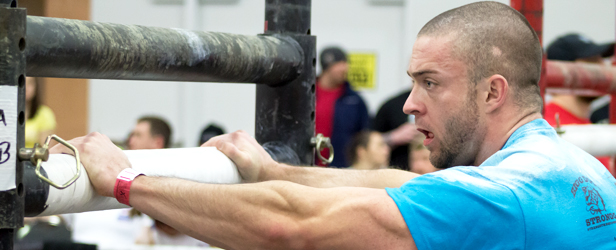
Sometimes the smallest tweak to your training is the one that makes the biggest difference. In this article, I will hit three things that I think a lot of lifters could benefit from using. These are either common mistakes I see or questions I receive from many lifters. While they all may not apply to you, chances are at least one of them will. Give these a try and see what you think.
 Maximize Circumferential Expansion
Maximize Circumferential Expansion
Most lifters still arch excessively hard when squatting, pulling and pressing weight overhead. While I won’t say arching is incorrect, I will say that I think that learning to brace instead of arch will do two things for you. First, you’ll actually be stronger; the bracing movement instead of the arching movement will give greater strength output. Secondly, reducing the excessive arch will relieve stress from the lower back. I first learned about this technique from Mike Robertson. Once I started using it, my lifting improved almost immediately. My squat form looked much better and my low back didn’t aggravate me anymore.
When arching hard, you actually place your lumbar spine into hyperextension and elongate the abdominals. Your diaphragm and pelvic floor open forward causing you to lose pressure throughout the core and abdomen. This can increase your chance of injury and may limit the amount of weight you can move.
You want your diaphragm and pelvic floor to be facing each other (neutral spine, not arched). Once in this position you’ll take in a deep breath and expand 360 degrees around the midsection. You want pressure to the front, sides and the back. Now you simply hold this breath and perform your movement. Here is a short video of how to do this and how to practice it by yourself:
 Row Correctly
Row Correctly
A lot of lifters row incorrectly. This not only puts the shoulder at an increased risk of injury, but it also doesn’t allow the lifter to develop their back to its full potential. When rowing, you want to initiate the movement by retracting the scapula and then pulling with the arm through the elbow.
I used to try to move as much weight as possible on all my rowing movements. A few years back when I started rowing correctly I was able to get more out of less weight and train my upper back much better. I also noticed my shoulders seemed to feel much better and my posture improved. With rows, I find it’s best to train the “muscles” instead of the “movement.”
What do I mean by this? Take the squat for example. I train the squat to move as much weight as possible with correct technique. I’m not trying to feel my quads work, or my hamstrings work, or any other body part work. I’m just training the movement as a whole. Alternatively, let's look at the glute ham raise. With this exercise, I’m training the muscles. I’m trying to feel my hamstrings work and focusing on feeling them. I’m not concerned with the movement as much. I’d rather do ten quality GHRs and kill my hamstrings than bust out a set of 15 and not feel them nearly as much. It’s about getting less out of more.
This is how I approach rows the majority of the time. I do them similarly to how a bodybuilder would: focus on feeling the muscles. On some movements such as one arm rows, I do think it’s perfectly fine to get a little “body English” into the movement and not necessarily “feel” the back working towards the end of a set, but I still recommend maintaining proper rowing motion.
 Program Accessory Work
Program Accessory Work
I get a ton of questions about programming accessory work. I do think that some lifters "major in the minors," but accessory work should be done with a purpose and some sort of progression. Implementing these into your current program shouldn’t be very difficult at all. Just find which progression would work best for the respective lifts you’re currently doing and start programming it. These can be used on a variety of different lifts, not just the given examples. One thing I always recommend on accessory work is to start light. Over the course of the training block, either increase weight or volume. (Note: This is only how I approach off-season accessory work. Pre-contest or pre-meet training things should be handled differently.)








